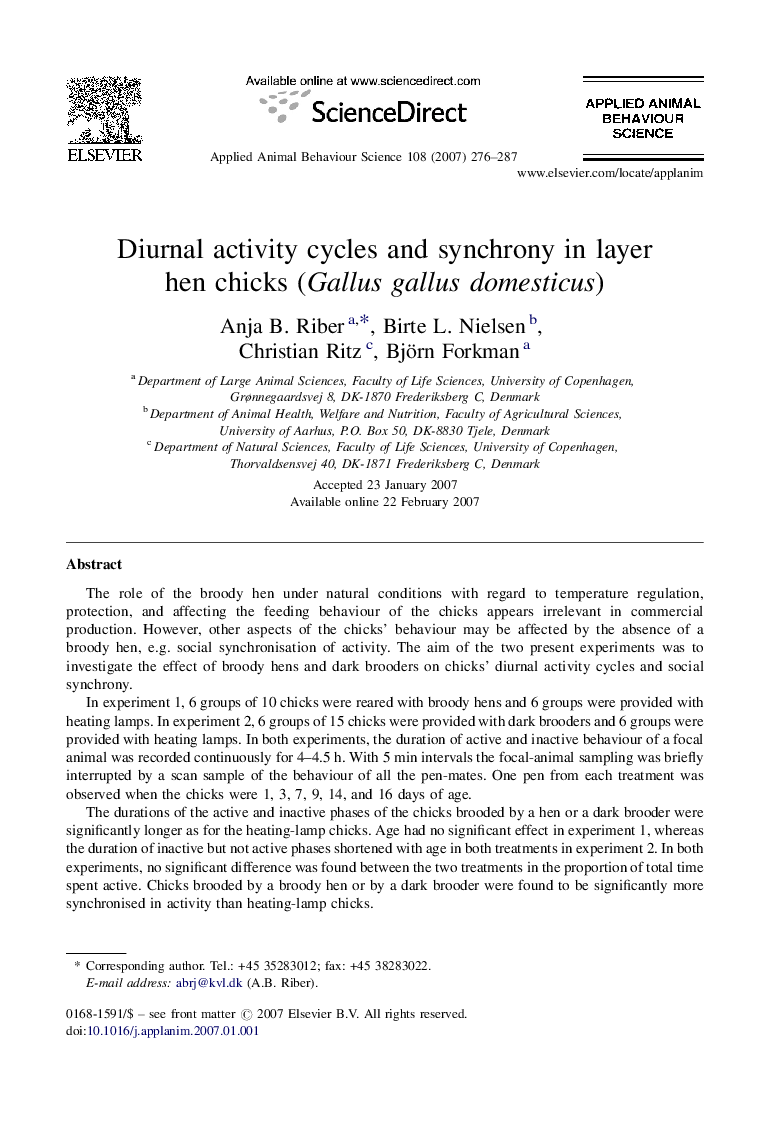| Article ID | Journal | Published Year | Pages | File Type |
|---|---|---|---|---|
| 4524143 | Applied Animal Behaviour Science | 2007 | 12 Pages |
The role of the broody hen under natural conditions with regard to temperature regulation, protection, and affecting the feeding behaviour of the chicks appears irrelevant in commercial production. However, other aspects of the chicks’ behaviour may be affected by the absence of a broody hen, e.g. social synchronisation of activity. The aim of the two present experiments was to investigate the effect of broody hens and dark brooders on chicks’ diurnal activity cycles and social synchrony.In experiment 1, 6 groups of 10 chicks were reared with broody hens and 6 groups were provided with heating lamps. In experiment 2, 6 groups of 15 chicks were provided with dark brooders and 6 groups were provided with heating lamps. In both experiments, the duration of active and inactive behaviour of a focal animal was recorded continuously for 4–4.5 h. With 5 min intervals the focal-animal sampling was briefly interrupted by a scan sample of the behaviour of all the pen-mates. One pen from each treatment was observed when the chicks were 1, 3, 7, 9, 14, and 16 days of age.The durations of the active and inactive phases of the chicks brooded by a hen or a dark brooder were significantly longer as for the heating-lamp chicks. Age had no significant effect in experiment 1, whereas the duration of inactive but not active phases shortened with age in both treatments in experiment 2. In both experiments, no significant difference was found between the two treatments in the proportion of total time spent active. Chicks brooded by a broody hen or by a dark brooder were found to be significantly more synchronised in activity than heating-lamp chicks.Long active and inactive phases may be closely associated with and pre-disposing for synchrony in groups of chicks, which may reduce development of feather pecking. The broody hens may be more efficient in synchronising both active and inactive phases of activity.
